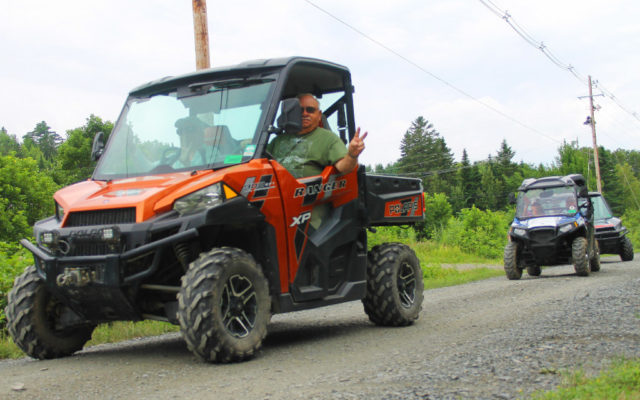
This approach to trails is a first in Maine
By Julie Harris, Bangor Daily News Staff
Snowmobile and ATV trails that were so devastated by the 500-year storms more than a year ago could be repaired with money from the $30 million bond voters approved in November.
The clubs just have to apply for the money by Sept. 26.
The state has had money to build, repair and maintain trails through two major federal programs for decades, but this is the first non-conservation-related state bond to support just outdoor recreation infrastructure in Maine.
“Lots of bridges and culverts still need replacing, and some trails still are not open,” Douglas Beck, outdoor recreation program manager in the Maine Bureau of Parks and Lands, said.
The Maine Trails Program, funded by the bond, will be administered by the Grants and Community Recreation Program within the Bureau of Parks and Lands. That administrator also handles the 30-year-old Recreational Trails Program and the 60-year-old Land and Water Conservation Program, both funded by federal money.
Up to $7.5 million of the $30 million bond can be used each year and all of the money has to be spent by 2034. All motorized, non-motorized and multi-use trails open to the public qualify. Nonprofit organizations, municipalities and qualified subdivisions of state government can use up to 90 percent bond money to fund their individual public trail projects, Beck said. They need to raise the rest.
Private landowners would have to have eligible project partners and allow public access to participate.
Whatever amount of the $7.5 million that is not used each year can be rolled over, as long as all bond money is spent by 2034.
The funding can be used to repair existing or to develop new trails, trailheads and trailside amenities, as long as the public is ensured access. It also may be used to acquire easements or simple fee title to land for trails or to link existing trails.
Some areas have a lot of trail systems, such as Greater Bangor, that could benefit from the program, Beck said.
The idea is to have well-built trails that can withstand 500-year weather events, but they are expensive, he said. The cost per mile of such trails depends on the soil type, terrain and other factors. Because of those unknowns, he could not estimate how many miles of trails the funding might build or restore.
“The funding gives us a chance to respond to dramatic weather events,” he said. “[Those storms] showed how under-designed trails cannot hold up.”
A Maine Trails Advisory Committee, made up of people from motorized and nonmotorized recreation, will provide guidance and help evaluate and recommend which projects get funded.
Thirty-seven other states have strategies for maintaining and improving their trail infrastructures without bond funding, many of which are based on taxes, Beck said. Maine can talk about that too for the future, he said.